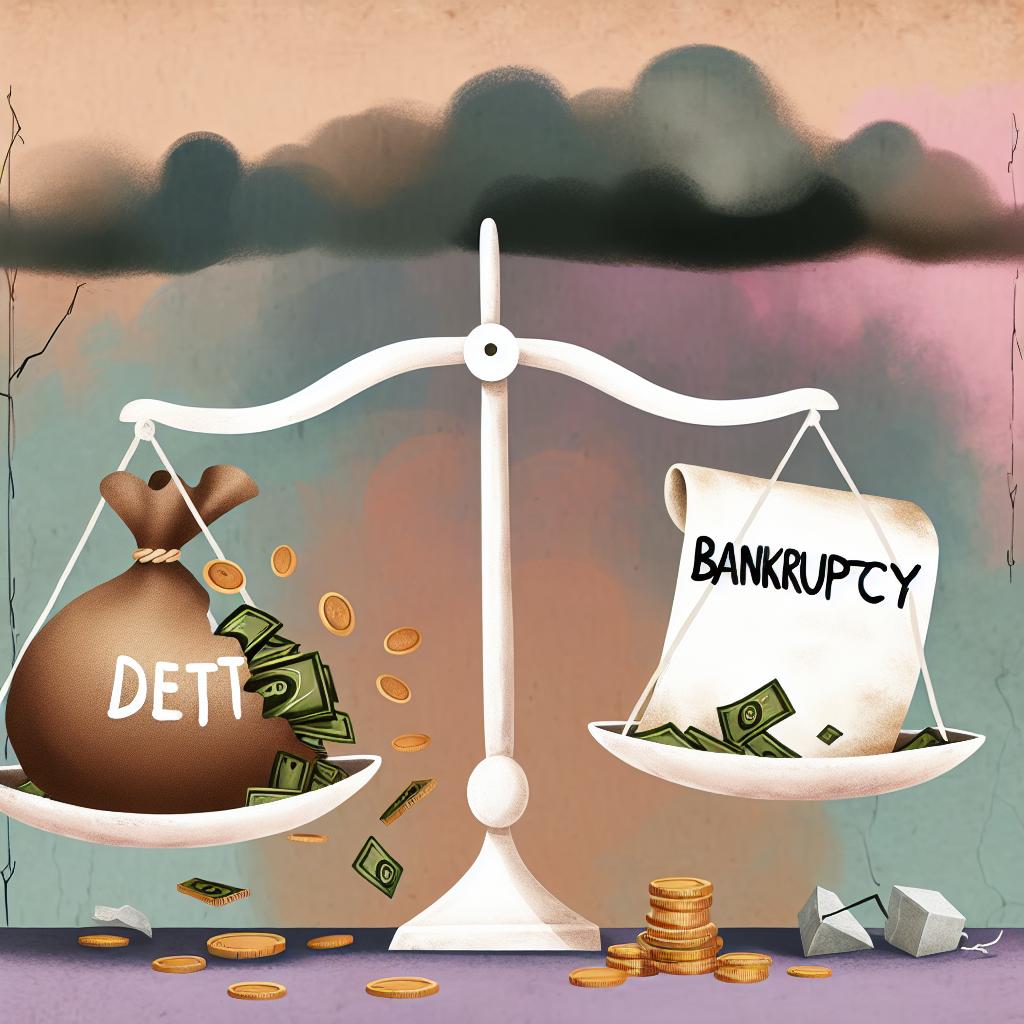Understanding Debt and Bankruptcy
Debt and bankruptcy are intertwined financial concepts, yet they represent distinctly different situations. Managing significant debt can be a challenging experience, and for some individuals, bankruptcy may become a viable option. Understanding the nuances between the two and recognizing when filing for bankruptcy is necessary can help in making informed financial decisions.
What Constitutes Debt?
Debt refers to the amount of money borrowed by an individual or entity from another party. Common types of debt include credit card balances, mortgages, student loans, and personal loans. Properly managed debt allows borrowers to leverage resources for various needs, from buying a home to funding education. However, excessive debt can lead to financial strain, making it difficult to meet obligations.
To better understand the implications of debt, it is crucial to distinguish between different types of debt obligations. Secured debt includes loans backed by collateral, such as a home or car. If you fail to repay, the lender can seize the asset. Unsecured debt, on the other hand, is not tied to any particular asset and includes credit cards and medical bills. While secured debt can often offer lower interest rates given the reduced risk to the lender, unsecured debt typically carries higher interest rates due to the increased risk involved.
The ability to manage debt effectively often hinges on understanding these differences and managing the repayments appropriately to avoid spiraling into financial trouble. The prudent use of debt allows individuals to make significant purchases while spreading costs over time. However, mismanagement, leading to what is termed as “bad debt,” can result in financial distress.
Signs of Unmanageable Debt
Not all debt is bad, but it becomes an issue when it overwhelms personal finances. Recognizing the signs of unmanageable debt is essential in taking proactive steps towards prevention. These signs often manifest as:
- Consistently missing payments or paying late: A frequent inability to meet payment deadlines indicates a cash flow problem.
- Using credit cards to pay for essentials: Relying on credit for daily expenses like groceries and utilities often signals insufficient income or poor budgeting.
- High-interest rates and mounting penalties: Inability to pay down existing debt can lead to increased costs, making it even harder to escape the debt cycle.
- Debt collection agencies contacting you: Persistent calls from creditors or collection agencies indicate that the debt has reached a critical point.
When these indicators are present, it’s necessary to take immediate action to address the debt problem. This might include reevaluating the current financial situation, creating a detailed budget, or consulting a financial advisor.
When Bankruptcy Becomes an Option
Bankruptcy is a legal proceeding designed to help individuals or businesses eliminate or repay their debts under the protection of the court. It can offer a fresh financial start but not without its drawbacks. Deciding to file for bankruptcy is a significant decision and should not be taken lightly.
The choice to file for bankruptcy involves a detailed examination of one’s financial health and weighing potential repercussions. This process might include discussions with financial counselors or legal advisors to fully understand the consequences and benefits of such a measure.
Types of Bankruptcy
In the United States, the most common types of bankruptcy for individuals are:
- Chapter 7: Known as “liquidation bankruptcy,” it involves selling assets to repay creditors. It can discharge unsecured debts, such as credit card debt, but may require forfeiture of property.
- Chapter 13: Allows individuals with a regular income to develop a plan to repay all or part of their debts. This is typically for those who want to keep their property and have predictable future income.
It’s crucial to understand which type of bankruptcy applies to your situation and how it will affect your financial future. Chapter 7 may offer a complete discharge of debts more quickly, whereas Chapter 13 involves a longer repayment period but allows retention of assets.
Considerations Before Filing
Filing for bankruptcy comes with consequences, including a significant impact on credit scores and potential loss of assets. Here are factors to consider:
- The amount and nature of debt: Evaluate whether debts are largely secured or unsecured, as this will influence the decision-making process.
- Future financial stability and income: Consider whether income levels will support repayment plans under Chapter 13.
- Eligibility for different types of bankruptcy: Legal and financial eligibility criteria can determine the applicable bankruptcy chapters.
- Long-term financial goals: Consider how bankruptcy could impact future opportunities, such as loan approval, housing prospects, and career advancement.
Understanding these aspects is vital before making any decision. This ensures that bankruptcy is the right tool for managing the specific financial challenges faced.
Alternatives to Bankruptcy
Before proceeding with bankruptcy, exploring alternative solutions might be beneficial:
- Debt Consolidation: Combining multiple debts into a single loan with a potentially lower interest rate can simplify repayment and reduce the monthly debt burden.
- Debt Settlement: Negotiating with creditors to reduce the total debt amount allows for mutually beneficial agreements that avoid the bankruptcy process.
- Credit Counseling: Seeking guidance from a certified credit counselor to develop a debt management plan may provide structured support in managing financial difficulties.
These alternatives can sometimes provide relief and help manage financial obligations without the long-term repercussions of bankruptcy. Consulting with a financial advisor for personalized advice can also aid in identifying which option might be most appropriate.
Conclusion
Deciding whether to file for bankruptcy is a complex and personal decision. It is essential to assess one’s financial situation, explore alternatives, and, if necessary, seek professional advice. Understanding the impact of debt and the ramifications of bankruptcy can help individuals make choices that best suit their financial recovery and future stability.
The path to financial stability often involves difficult decisions and strategic planning. By thoroughly examining all available options, individuals can more effectively navigate their financial landscapes and work towards sustainable financial health.
This article was last updated on: August 11, 2025


